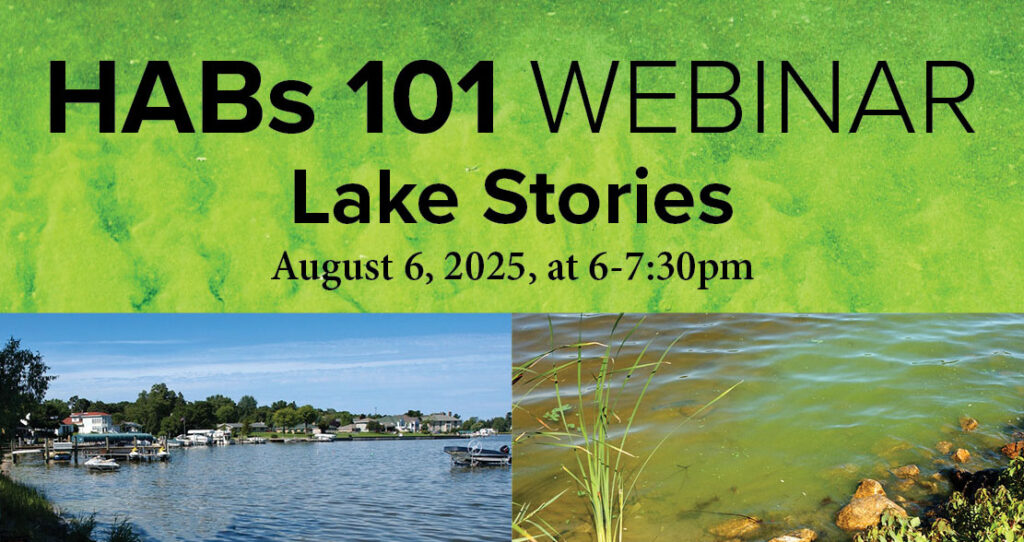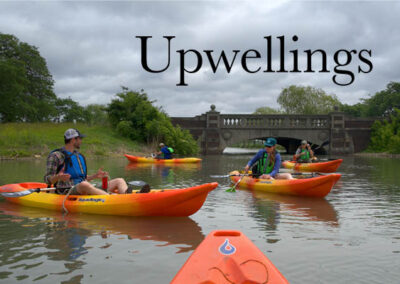
Hear firsthand from Michiganders who are tackling harmful algal blooms (HABs) in their inland lakes. See how they’re bringing neighborhoods and communities together to identify challenges and explore solutions. Michigan Sea Grant Director Silvia Newell will also share her perspective as a researcher putting potential HABs solutions to the test.
Join Michigan Sea Grant and state partners for this free webinar on August 6, 2025, at 6-7:30pm. Register here to receive the zoom link.
HABs are caused by cyanobacteria, tiny organisms that live naturally in the water. They’re often called algae, because they get energy from the sun like plants.
Cyanobacteria thrive in warm water with lots of sunshine and nutrients washed in by recent rain. Under these conditions, they can multiply quickly enough that their population can be seen by human eyes (an “algal bloom”). Sometimes the algae produce chemicals that harm human or animal health (a “harmful algal bloom” or HAB).
These blooms are a growing problem in the Great Lakes, but they also show up in inland lakes and ponds around Michigan.
Keep your loved ones and pets safe around a HAB:
- If there’s a sign about a HAB advisory or closure, follow the instructions.
- Avoid wading, boating, fishing, or swimming in water with a visible bloom. When in doubt, stay out.
- Keep pets from touching or drinking the water.
- Blooms can grow and fade quickly and may drift around with wind and waves. Once the water is clear, it’s generally safe to touch.
- You can still use unaffected areas, unless the bloom covers most of the lake.
Catch up on previous HABs 101 webinar recordings to learn about fundamentals about HABs, common algae species in Michigan, and prevention and management strategies.
According to a follow-up survey, more than 80% of folks who joined or watched a previous HABs 101 webinar used the information they learned to access a HAB map, reduce fertilizer use, avoid kayaking through a HAB, and take other conservation actions. If you put HABs 101 into practice, let us know with an email to [email protected]


